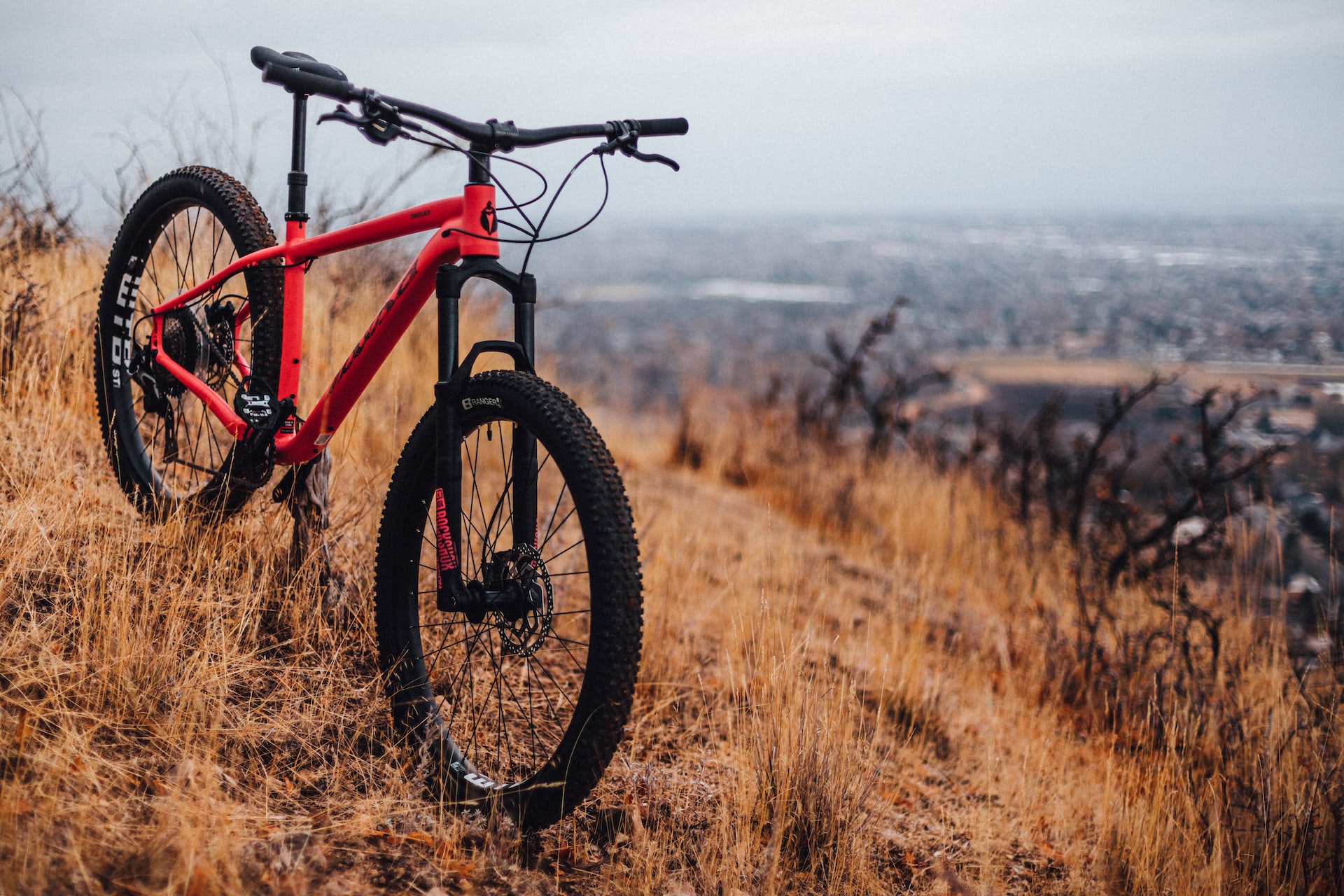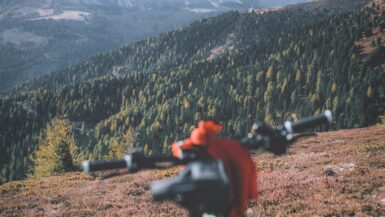If you love the thrill of mountain biking, you know how important it is to be able to ride uphill efficiently. Riding uphill can be exhausting and daunting, but with the correct technique, it is possible to make it much more enjoyable and make long rides much more manageable. This article will cover a few tips to help you ride a mountain bike uphill efficiently and reach the top with less effort and more style.
Preparation
To ride your mountain bike uphill efficiently, ensure you have the correct gear. Invest in a quality mountain bike that fits you correctly, and select tires with plenty of traction. You may also buy a full-suspension or hardtail mountain bike with increased traction and shock absorption to make your ride smoother and more efficient. Additionally, ensure you wear comfortable and supportive clothing and shoes for mountain biking.
Learn the Fundamentals
Before you attempt to ride your mountain bike up a steep hill, brush up on the fundamentals of mountain biking. Knowing the proper technique to shift gears, mount the bike, and the brake will help make your ride more efficient.
Create a Training Plan
Developing your endurance and strength is essential for riding your mountain bike efficiently up a hill. To do this, create a training plan focusing on specific exercises that strengthen the lower body muscles used in mountain biking. Incorporate running, biking, and core exercises into your program. Additionally, make sure to ride your mountain bike up hills of various lengths and degrees of difficulty to build your confidence and stamina.
Technique
When mountain biking, the type of trail you choose will drastically affect how efficiently you ride up a hill. Look for courses that feature gradual inclines rather than incredibly steep ones. Trail surfaces should also be considered. Steep hills can often be easier if there is a rough surface to help you gain traction.
Picking the Right Gear
One of the most important aspects of efficiently riding a mountain bike uphill is choosing the correct gear. Aim to select a gear that allows you to keep your cadence at a steady pace. A higher gear will force you to push harder, while a lower gear will make it challenging to build momentum.
Using Your Weight
Your body weight also plays a vital role in efficiently riding a mountain bike uphill. Shift your weight towards the back of the bike when going uphill, as this will help you keep your center of gravity over the back wheel, making it easier to move forward. When going downhill, shift your weight towards the front of the bike for enhanced traction.
Conserving Energy
When riding up a steep hill, conserve energy by not pedaling too hard. Try to keep a steady tempo and stay seated for as long as possible. If necessary, take short breaks to rest and regain energy.
Maximizing Momentum
Always build as much momentum as possible when riding up a hill. If possible, take a run-up before you start to pedal. This will help you get up to speed quickly, allowing you to reach the top of the hill with less effort.
Safety
Safety should be your top priority when mountain biking uphill. Investing in the right gear can make all the difference for a safe and comfortable uphill ride. The essential gear you should consider includes:
- A bike helmet
- Protective eyewear
- Body armor
- Full-finger gloves
- Comfortable clothing and shoes
- A water bottle and hydration pack
Technique for Climbing Uphill
Once you have the right gear for your ride, proper technique is essential for an efficient and safe climb. When going uphill, maintain a low center of gravity by keeping your pedals at the same level and maintaining a close grip on the handlebars. Avoid pumping the pedals too hard, as this can cause a loss of traction. You may need to get off and push the bike up when facing steep inclines. Make sure to shift gears as necessary to find a comfortable cadence.
Mental Preparation for Uphill Riding
In addition to the right gear and technique, you should prepare yourself mentally for an uphill ride. Establish a goal and time limit so that you don’t over-exert yourself. Have a positive attitude and set realistic expectations. Remind yourself of your dreams, rest when needed, and don’t be afraid to ask for help if you need it. Lastly, be aware of the challenges and risks that come with mountain biking, and take all necessary precautions.
Gear
When riding a mountain bike uphill, it is essential to choose the right gear. A higher gear ratio will make pedaling more accessible, while a lower gear ratio will help you climb steeper terrain. When climbing technical hills, selecting a low enough gear is essential, so you don’t spin out while maintaining enough torque to get over the technical sections. When climbing a more accessible hill, a higher gear ratio will help conserve energy and make the climb easier.
Adjusting Seat Height
Adjusting the seat height can make a huge difference when riding uphill. If the seat is too low, you will struggle to push the pedals and lose power. If the seat is too high, it can cause discomfort and strain your knees unnecessarily. The seat should be high enough to pedal efficiently but not so high that you experience discomfort or pain.
Maintaining Balance
Balance is critical when riding a mountain bike up a steep hill. It will help if you practice shifting your weight from side to side to ensure that you can keep your balance as you maneuver over obstacles. When riding up steep hills, it is essential to keep your center of gravity low by leaning back slightly and using your arms and legs to absorb the shock of the terrain.
Mastering Momentum
Conserving momentum is essential when riding up a hill. When riding up technical terrain, it is often best to keep a steady rhythm and keep the bike moving forward. Use gravity to your advantage, and maintain a steady pace without coasting. If you start to slow down, it may be easier to get back up to speed than to start from a complete stop.
Recovery
The best way to climb hills on a mountain bike is to gain as much momentum as possible. You can do this by starting with a running start. Begin running and then hop onto your bike. Your running will help you gain momentum and make it much easier to pedal to the top.
Finding the Best Path
You want to take the most efficient line when riding up a tough hill on your mountain bike. This means finding the least steep route that still gets you to the top. Before tackling the climb, strategize and look for the path with negligible elevation gain.
Optimizing Gear Selection
A big part of riding up a hill efficiently is choosing the right gear. You want to match your gear to the steepness of the mountain. Use easier gear to climb steep hills and more complicated gear for less steep hills. If you have too hard of a gear, you’ll spin out; too easy of a gear, and you’ll struggle to pedal.
Positioning your Body for Efficiency
When riding a hill on a mountain bike, the most efficient way to pedal is by keeping your body in an upright position. This will allow you to utilize your most vital muscle groups and maintain you from tiring out too quickly. Keep your arms and shoulders relaxed and your back as straight as possible.
Stay Relaxed on the Climb
The mountain bike will handle the hill better if you keep your body relaxed. Don’t over-grip the handlebars, and don’t tense up. Keeping your muscles and joints relaxed will help you take on the hill with less fatigue and effort.
Recovery After the Hill
Once you’ve made it to the top of the hill, you’ll need to take some time to rest and recover. After riding a challenging hill on your mountain bike, it’s essential to hydrate, refuel, and give yourself a few minutes to rest. Taking a few deep breaths and stretching your legs will help you prepare for your next climb.
The Benefits of Uphill Mountain Biking
Uphill mountain biking can be a challenging but rewarding experience. It takes practice, patience, and technique to maximize efficiency and minimize energy output. The first step is to find the right gear for the terrain and adjust the bike to fit your body. Once you’re ready to ride, use low gear and aim for a comfortable cadence. Keep your body upright and relaxed to conserve energy, and focus on “pumping” the pedals rather than pushing them down. Utilize your momentum whenever possible, and remember to take regular breaks to rest and refuel.
With the proper technique and practice, anyone can conquer the hills and be rewarded with an exhilarating experience. Uphill mountain biking can be an enjoyable and beneficial activity — an effective way to build strength and endurance while providing incredible views and a sense of accomplishment.






Leave a reply